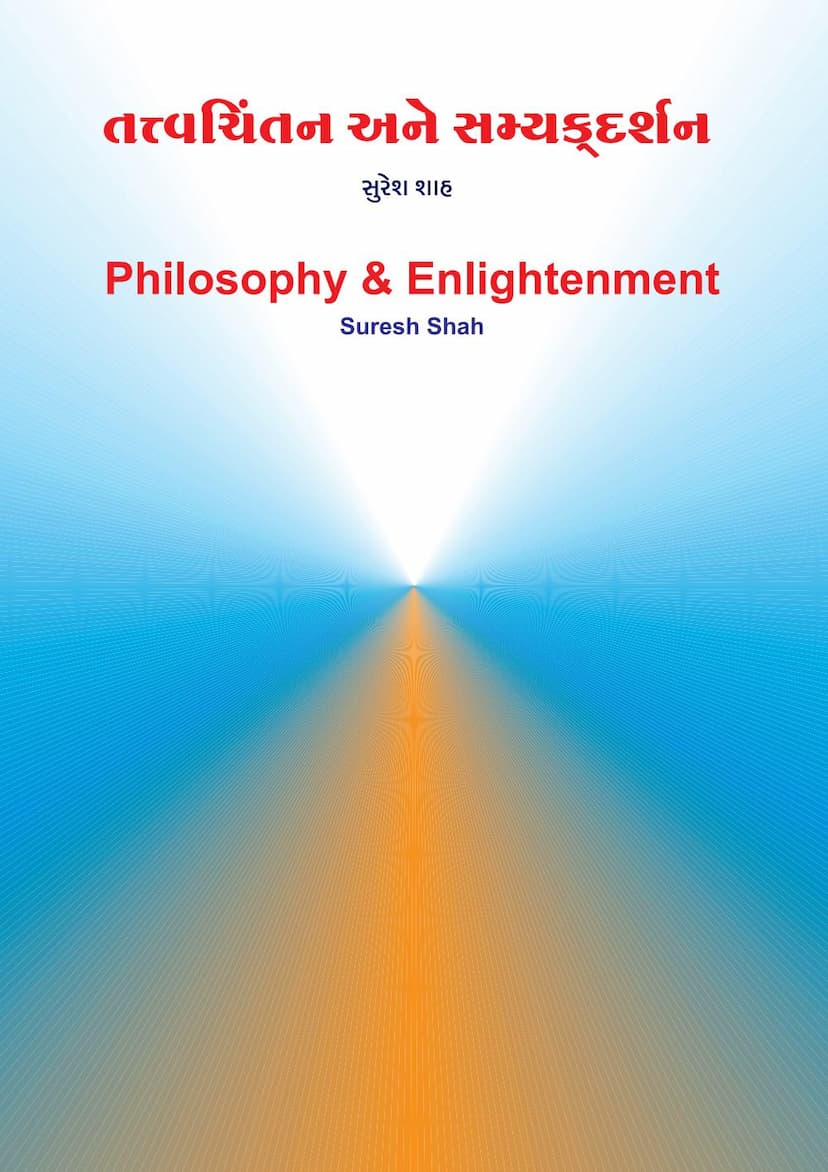Tattva Chintan Ane Samyag Darshan
Added to library: September 2, 2025

Summary
This book, "Tattva Chintan ane Samyag Darshan" (Philosophy & Enlightenment) by Suresh Shah, offers a comparative study of Western and Indian philosophy, with a particular focus on Jainism and the teachings of Shri Shrimad Rajchandra.
The author begins by defining philosophy as the "love of wisdom" and outlines its roots in ancient Greece with figures like Thales, Socrates, Plato, and Aristotle. He briefly touches upon key Western philosophers and their ideas, including Plato's concept of two worlds (ideal and real), Aristotle's realism, Descartes' emphasis on doubt, Kant's exploration of knowledge limits, and Hume's theories on statements.
The book then transitions to Indian philosophy, highlighting its Vedic origins and the concept of Vedanta. It outlines the four stages of dharma (virtues, wealth, desire, liberation) and the four stages of life (Bramhacharya, Gruhasthashram, Vanprasthashram, Sansyasahram). The author discusses various schools of Indian philosophy such as Vedanta (with interpretations by Shankracharya, Ramanujacharya, Nimbakacharya, Madhvacharya, and Vallabhacharya), Purva and Uttar Mimansa, Vaishishka, Nyaya, Sankhya, and Yoga. He explains the core tenets of each school, including the concept of Purush and Prakriti in Sankhya and the Ashtanga Yoga path in Yoga.
A significant portion of the book is dedicated to Jainism. It introduces the lineage of Tirthankaras, from Rishabhdev to Mahavir Swami, and emphasizes the Jain belief in the inherent potential of every soul to become a divine being (Paramatma). The core principles of Jainism are presented, including:
- Anekantavada (multi-sidedness of reality) and Syadvada (conditional predication).
- The Five Mahavrats (Great Vows): Satya (truthfulness), Ahimsa (non-violence), Aparigraha (non-possession), Brahmacharya (celibacy/control of senses), and Asteya (non-stealing).
- The Nine Tatvas (categories of reality): Jiva (soul), Ajiva (non-living matter), Punya (merit), Pap (demerit), Ashrav (influx of karma), Samvar (stopping influx of karma), Nirjara (shedding of karma), Bandh (bondage of karma), and Moksha (liberation).
- Six Elements (Dravya): Jiva, Ajiva, Dharma (medium of motion), Adharma (medium of rest), Akash (space), and Kal (time).
- Four Yogas (paths of spiritual practice): Dharmakathanuyog, Dravyanuyog, Karnanuyog, and Charnanuyog.
- Six Principles of the Soul (Atma): its existence, eternality, agency, experience of actions, possibility of liberation, and the means to achieve it.
- Eight Karmas and Eighteen Sinful States.
- Twelve Bhavanas (reflections) and Eight Drishti (perspectives).
- Fourteen Steps to Attain Knowledge of Totality.
The book also includes a significant section translating and explaining "Atma Siddhi Shastra" by Shri Shrimad Rajchandra. This section is presented as a dialogue between a disciple and the enlightened Guru, addressing fundamental questions about the soul, its existence, immortality, agency, and the path to liberation. The author aims to clarify these spiritual concepts through this discourse. The translation emphasizes the importance of understanding the soul as distinct from the body and the path of self-realization guided by a true Guru.
The author concludes with reflections on the profoundness of Jain teachings and quotes from Shrimad Rajchandra, highlighting Jainism's completeness, purity, truthfulness, and its universal benefit. He shares his personal journey of discovering the spiritual teachings of Shrimad Rajchandra and his desire to spread the message of peace, harmony, non-violence, and happiness.
In essence, the book serves as an accessible introduction to comparative philosophy, with a deep dive into Jain philosophy and the spiritual insights of Shrimad Rajchandra, aiming to guide readers towards self-awareness and enlightenment.